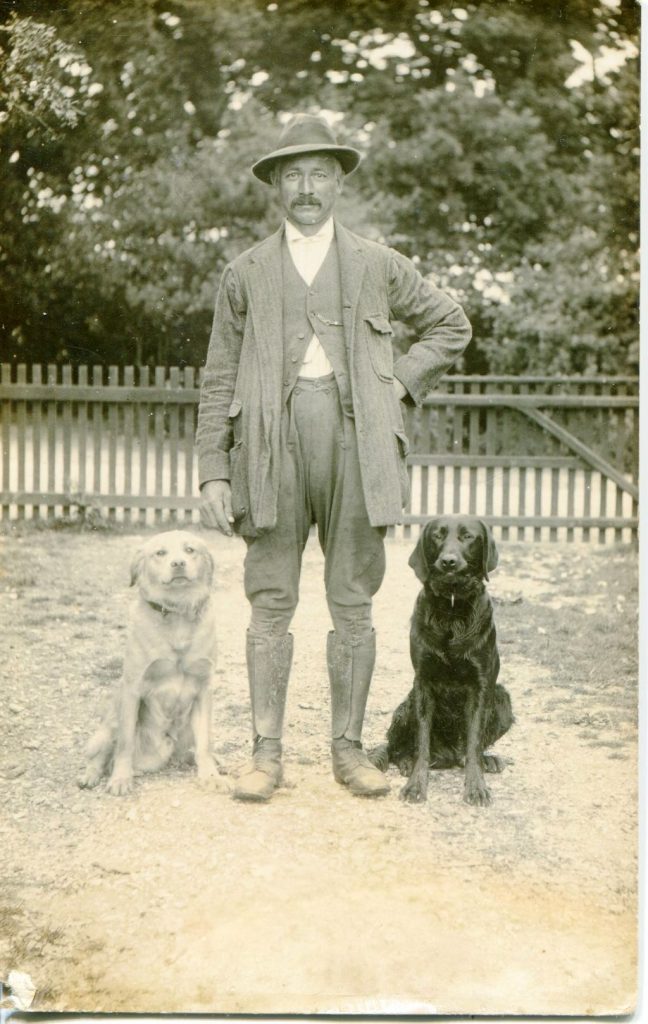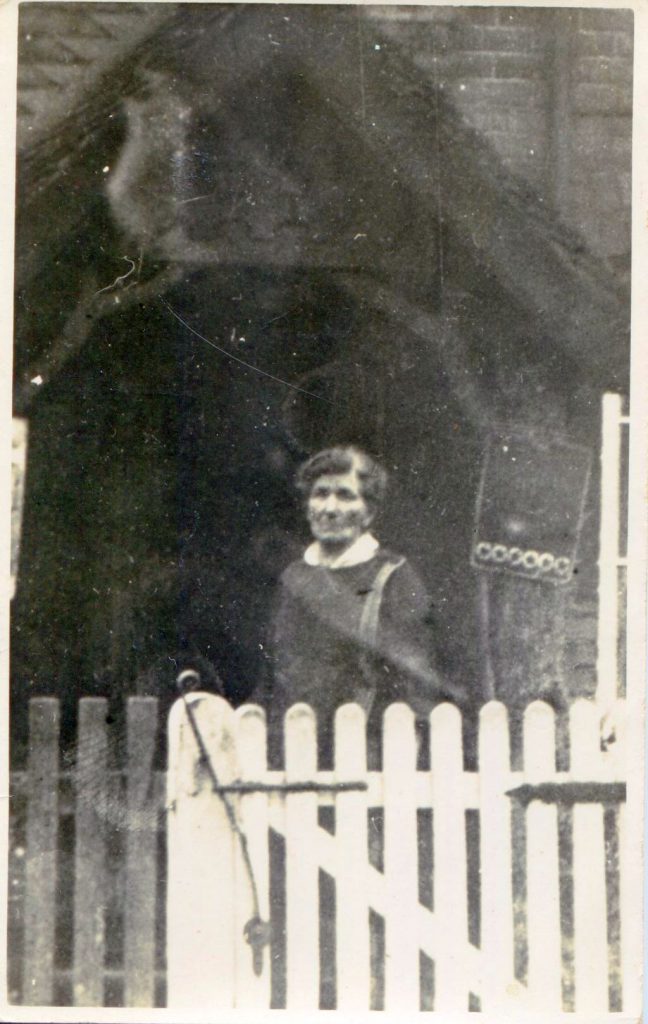Mary Gray, Transcript 1, Part 1
An interview with Mary Gray at her home in Brook on 30th November, 2016.
Images: Mary Gray, copyright reserved. For any rights requests, please contact the New Forest Heritage Centre in the first instance.
Mary Gray Trans 1 CH1 Duration: 7:00
CB: This is Clare Bates interviewing Mary Gray at her home in Brook on the 30th November, 2016. So Mary can you tell me a little bit about your Commoning history and family?
Mary: Yes, I can, a little, as much as I can. On my father’s side, my name is Rockley and my grandad Rockley – Levi – he was Commoning as well. Also my father’s brother, Bill. They were a small Commoning family; like a lot more, they were… it was a paid hobby; hopefully, a paid hobby. They often had to work alongside, nine times out of ten they did, on other jobs. Like my father, he worked for the Commission and latterly the Council, just to sort of marry alongside, to keep financially going; there weren’t the subsidies and things in those days. And on the – Levi, he was greenkeeper here on the golf course. And also when the gunpowder factory at Eyeworth, he worked there. Well, that was sort of in the First World War and he used to cycle up there and I think worked very long hours, but managed to keep Commoning going as well. So really, basically, it does go back quite a long way. Sadly, my grandfather Levi passed away in nineteen thirty-six, so unfortunately I never knew him, for he was quite a grand character. So that is the basis of the Rockley side of the family.
CB: And did they live in this house?
Mary: No, they didn’t live here, they lived at Oaklands down the road and there’s a photo of my grandfather and grandmother there. The Rockleys, it was Levi and Annie, and fortunately I’ve now got a [information redacted] which is rather nice, his mother was Annie. But anyway, no, and then in nineteen forty-seven, forty-eight the family had to sort of split up, as they do, when Levi had died and Annie died and my father after a great struggle then, even, with New Forest District Council, managed to get this bungalow built.
CB: I see.
Mary: I was always interested in the Commoning. My sister went on to marry Keith Dibden at Wellow and has followed a bit different life, but I was always somehow in the blood; we followed on here with my mother once my father died in ‘seventy-three and we carried on, and I was fortunate to marry a soldier from Durham, would you believe (Both laugh) and he really took to it like a duck to water; and so we’ve been able to carry on and ‘course our two sons as well, [information redacted] and [information redacted].
CB: Oh, lovely. That’s really nice. So, can I ask, in those days, did they have prefixes? Did your father have a prefix.
Mary: Yes, it was Brook.
CB: Oh, was Brook –
Mary: Yes, Brook and that’s as it is now –
CB: So you’ve kept Brook on –
Mary: Yes. Carried Brook on and although we are Gray, because I was Mary Rockley, married Robert Gray –
CB: Yes –
Mary: But we still carry on with our Rockley brand.
CB: Lovely.
Mary: So that’s rather nice, yes.
CB: That’s Rockley Gray.
Mary: Brook Rockley.
CB: And then on your mother’s side – your mother’s maiden name was –
Mary: Was Soffe
CB: Soffe
Mary: Yes. Married George Rockley and those days again we’ve got her father, was John Charles, known in the Forest as ‘Dandy’. And they did Commoning from Stoney Cross. The cottage, lovely old cottage, sadly, they had a fire latterly, since our family left it and then it was just a chalet building now, but that was Chestnut Cottage, did Commoning from there, turned cows out on the A31, and he did a little milk round within the hamlet of Stoney Cross on his little cart, and also, alongside again, he did his little bit of Commoning, his little milk round and did thatching and spar-making was well-known. In fact, it was to do with his thatching in one like when he died, because he – down at Minstead Hall he had made a rick, attached a rick behind the hall there, in that field behind, and it was in nineteen forty-seven, in that terrible snow, he came down to cut the hay out like they used to with a truss, cut the hay out for somebody’s cattle, and he was stood at the bus stop because, believe it or not, in ’47, although it was bad, the buses still run; and he was waiting for a bus to get back to Stoney Cross and sadly he collapsed and died.
CB: Oh!
Mary: And Mr. Smith at the Club then came out, and sorted him out, wrote a lovely poem about him, actually. So, he was again – you know, of real Forest stock. Yes, stalwart, reliable –
CB: Yes, generations and generations. Right, okay, so: We’re going to go on to – this first photograph, Mary. (MG001) Tell me all about this one.

Mary: This is Levi with his dogs; he loved his dogs, and he’s stood at the top of his yard at Oaklands.
CB: And that was Levi Rockley.
Mary: Levi Rockley; George and Bill’s father.
CB: Okay. And what was Levi to you?
Mary: My grandad.
CB: He’s your grandad.
Mary: But, sadly, as I said before before he worked – he died in 36, so I didn’t really know him. But again, quite a character, got quite a twinkle in his eye. (Laughs)
CB: What year do you think that might have been, what sort of time?
Mary: That would have been … ‘twenties I expect, nineteen twenties.
CB: Nineteen twenties.
Mary: Yeah.
CB: Lovely, and the –
Mary: By the dress as well, how they used to dress. With the britches and the gaiters –
CB: Yeah, yeah I see.
Mary: Hobnail shoes, waistcoat, high-waisted trousers to protect their backs, with their braces –
CB: That’s right; Lovely. And this next one (MG002)

Mary: Well, this one is Annie, his wife. Again, I never knew her ‘cos she died, I think, about two years before Levi, or even earlier; and that’s at Oaklands at the gate. Her name, incidentally, was Farmer, before she married a Rockley.
CB: Okay.
Mary: Yes, so that’s an old Forest name, again.
CB: It is.
Mary: Yes. Apparently she was renowned to go around the sales of the houses when they were all selling up, you know, buying all the bits and pieces, sort of; she enjoyed that, it was her hobby, I think.
CB: Okay, again, would that have been nineteen twenties, as well, do you think?
Mary: Yes, definitely, nineteen twenties. And by her dress as much, you can see it, really.
CB: Yeah
Mary: Can’t see it that well but …

